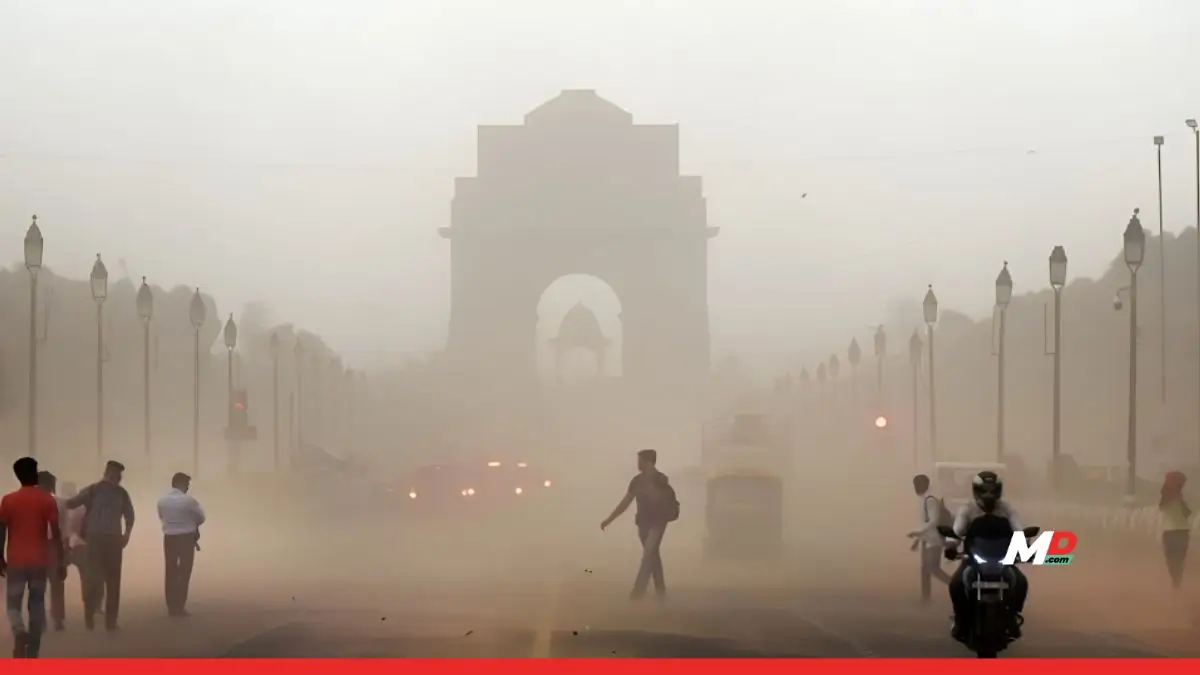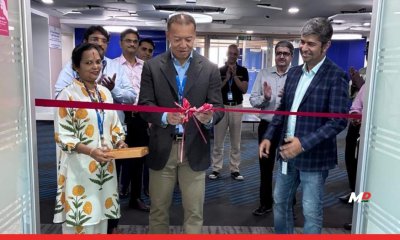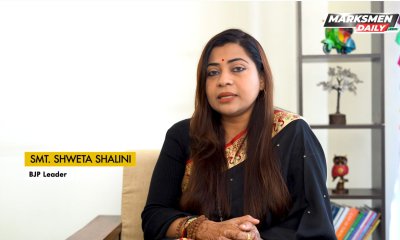Environment
Cloud of Concern: Pre-Diwali Pollution leaves Delhi Wheezing
Published
1 year agoon

As the festival of lights approaches, the air in northern India, particularly in Delhi, is transforming into a thick, toxic haze. With pollution levels skyrocketing to over ten times the safe limits set by the World Health Organization (WHO), the city is shrouded in a cloud of concern.
The Current State of Delhi’s Air Quality
In recent days, the air quality index (AQI) in Delhi has reached staggering levels, with readings soaring above 356. This puts the city firmly in the “severe” category, where the air is not just unbreathable, but a potential health hazard. The Central Pollution Control Board (CPCB) has reported that the concentration of PM2.5—particulate matter measuring 2.5 microns or less—has reached alarming levels, often exceeding the permissible limit of 15 micrograms per cubic meter.
What is PM2.5?
- Definition: PM2.5 refers to tiny airborne particles that can penetrate deep into the lungs and even enter the bloodstream.
- Sources: Major contributors include vehicle emissions, industrial discharge, and, notably, stubble burning in neighboring states.
- Health Risks: Exposure to high levels of PM2.5 is linked to respiratory diseases, cardiovascular issues, and even cancer.
Seasonal Trends
Every year, as winter approaches, Delhi’s air quality deteriorates due to a combination of factors:
- Weather Conditions: Low wind speeds and temperature inversions trap pollutants close to the ground.
- Agricultural Practices: Stubble burning in Punjab and Haryana releases vast amounts of smoke into the atmosphere.
- Festive Celebrations: The use of firecrackers during Diwali adds to the existing pollution levels, creating a toxic cocktail in the air.
The Role of Stubble Burning
Stubble burning has become a hot topic in discussions around air quality in Delhi. Farmers in Punjab and Haryana often resort to this practice to clear their fields quickly after harvest. While it may seem like a practical solution, the environmental ramifications are severe.
The Environmental Impact
- Pollutants Released: Burning stubble releases carbon dioxide, carbon monoxide, nitrogen oxides, and particulate matter, all of which contribute to poor air quality.
- Long-Term Effects: The accumulation of these pollutants can lead to chronic health issues and exacerbate climate change.
The Farmers’ Perspective
Farmers argue that they lack the resources for alternative methods of crop residue management. Despite being illegal, stubble burning continues due to inadequate support from government schemes aimed at providing financial and technical assistance.
Firecrackers: A Double-Edged Sword
As Diwali approaches, the air is filled with excitement, but also with the sounds of firecrackers. While they are an integral part of the celebrations, their contribution to air pollution cannot be overlooked.
Types of Firecrackers
- Traditional Firecrackers: Often contain harmful chemicals that release toxic gases when ignited.
- Green Crackers: Designed to produce less pollution, these are a step in the right direction but are not entirely eco-friendly.
The smoke produced by firecrackers can aggravate existing respiratory conditions and pose serious health risks to vulnerable populations, including children and the elderly.
Health Implications of Poor Air Quality
Living in a city with such poor air quality has profound health implications for its residents.
Respiratory Diseases
- Asthma and COPD: High levels of pollutants can trigger asthma attacks and worsen chronic obstructive pulmonary disease.
- Increased Hospital Visits: During the festive season, hospitals often see a surge in patients suffering from respiratory ailments.
Other Health Risks
- Cardiovascular Issues: Long-term exposure to air pollution is linked to heart diseases.
- Mental Health: Studies suggest that poor air quality can also impact mental well-being, leading to increased anxiety and depression.
Government Initiatives and Challenges
In light of the worsening air quality, the Delhi government has implemented several measures aimed at curbing pollution.
Graded Response Action Plan (GRAP)
This plan includes various measures, such as banning the use of coal and firewood and restricting construction activities.
Despite these initiatives, enforcement remains a challenge, and many residents continue to ignore the regulations.
Public Awareness Campaigns
The government has launched campaigns to educate the public about the health risks associated with poor air quality. They have also tried to engage local communities in discussions about pollution can foster collective action.
What Can Residents Do?
While governmental action is crucial, individual responsibility also plays a significant role in tackling air pollution.
Precautionary Measures
- Stay Indoors: On days when pollution levels are particularly high, it’s wise to limit outdoor activities.
- Use Air Purifiers: Investing in air purifiers can significantly improve indoor air quality.
Health Tips
- Hydration: Drinking plenty of water can help flush out toxins from the body.
- Healthy Diet: Consuming foods rich in antioxidants can bolster lung health.
The Role of Technology
In today’s digital age, technology can be a powerful ally in combating air pollution.
Air Quality Monitoring Apps
- Real-Time Data: Various apps provide real-time updates on air quality, helping residents make informed decisions.
- Community Alerts: Some apps allow users to report pollution sources, fostering community engagement.
Innovations in Pollution Control
- Green Technologies: Innovations such as electric vehicles and cleaner industrial practices can help reduce emissions.
- Sustainable Farming: Encouraging farmers to adopt sustainable practices can mitigate the impact of stubble burning.
The Importance of Community Action
Addressing air pollution is not just a governmental responsibility; it requires community involvement.
Grassroots Movements
- Local Initiatives: Communities can organize clean-up drives and tree plantation activities to improve local air quality.
- Awareness Programs: Educating the youth about the importance of clean air can lead to long-term change.
Collaborative Efforts
- Partnerships: Collaborating with NGOs and local businesses can amplify the impact of community initiatives.
- Shared Resources: Pooling resources for air quality monitoring and educational campaigns can be effective.
The Future of Air Quality in Delhi
As we look to the future, the question remains: what steps can be taken to improve air quality in Delhi?
Policy Changes
- Stricter Regulations: Implementing stricter regulations on emissions from vehicles and industries can lead to significant improvements.
- Incentives for Clean Energy: Providing incentives for the adoption of renewable energy sources can help reduce reliance on fossil fuels.
Long-Term Solutions
- Investing in Public Transport: Enhancing public transportation infrastructure can reduce the number of vehicles on the road.
- Urban Planning: Incorporating green spaces into urban planning can improve air quality and enhance the overall quality of life.
Celebrating a Healthier Diwali
As Diwali approaches, it’s essential to celebrate responsibly.
Alternatives to Firecrackers
- Community Celebrations: Organizing community light displays can replace the need for firecrackers while still allowing for festive celebrations.
- Eco-Friendly Decorations: Opting for eco-friendly decorations can reduce waste and pollution.
Prioritizing Health
- Mindful Celebrations: Being mindful of air quality while celebrating can help protect the health of everyone, especially vulnerable groups.
- Promoting Green Practices: Encouraging friends and family to adopt greener practices can foster a culture of environmental responsibility.
Creating a Breath of Fresh Air
As Diwali approaches, the air quality in Delhi serves as a stark reminder of the challenges we face regarding pollution. While the festival is a time for celebration, it’s also an opportunity to reflect on our health and the environment. By taking collective action and making informed choices, we can work towards a future where the air is as pure as the lights that adorn our homes. Let’s make this Diwali not just a festival of lights but also a festival of health and wellness.
You may like
-


“Fleet efficiency and smart deployment defined India’s Airline growth in 2025,” says Jaideep Mirchandani
-


NTT DATA Announces Six New AI-Powered Cyber Defense Centers to Strengthen Cyber Resilience and Counter an Evolving Threat Landscape
-


Kota’s signal-free streets are an urban design revolution
-


Baat Bharat Ki: Smt. Shweta Shalini on Governance, Gender, and the ‘War Room’ Strategy
-


Sanchar Saathi meets a firewall, Centre rolls back mandatory pre-installation order
-


Allianz Commercial: Geopolitics and cyber drive risk exposures for directors and officers in 2026


